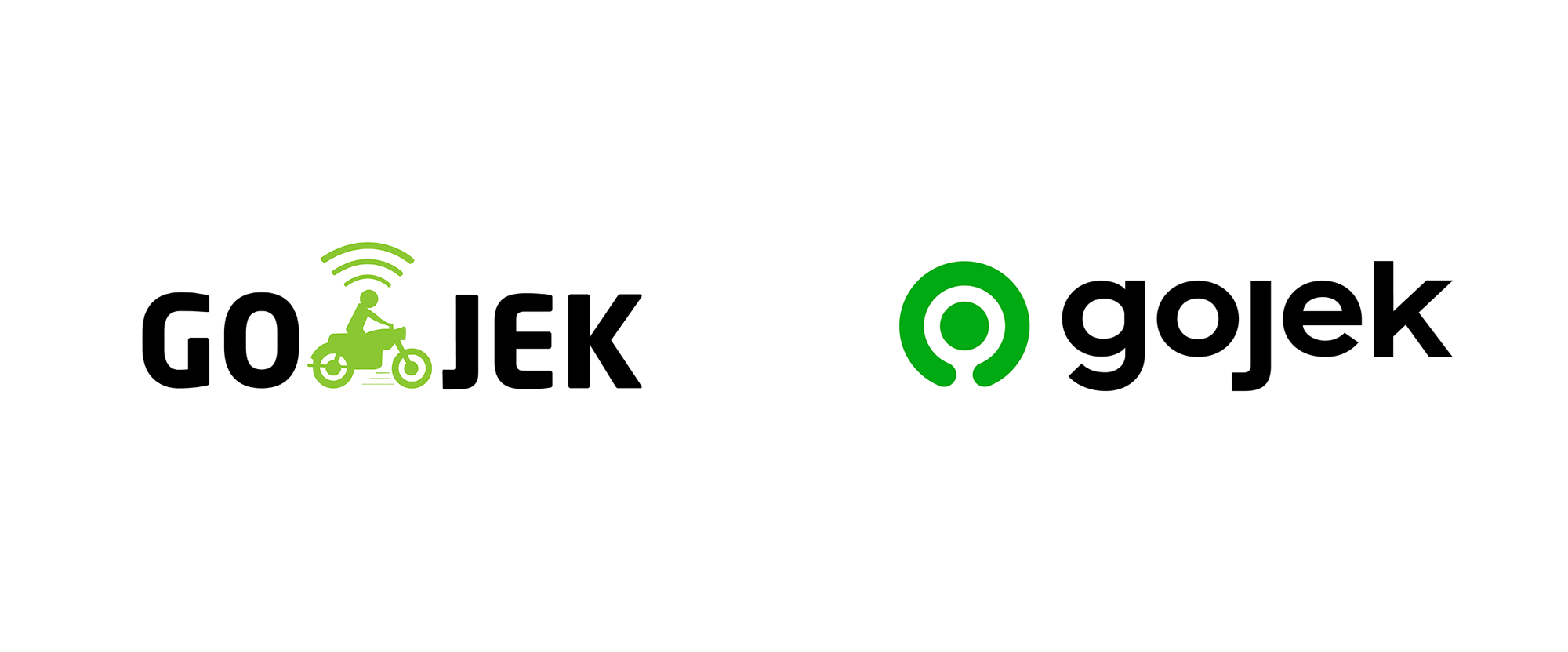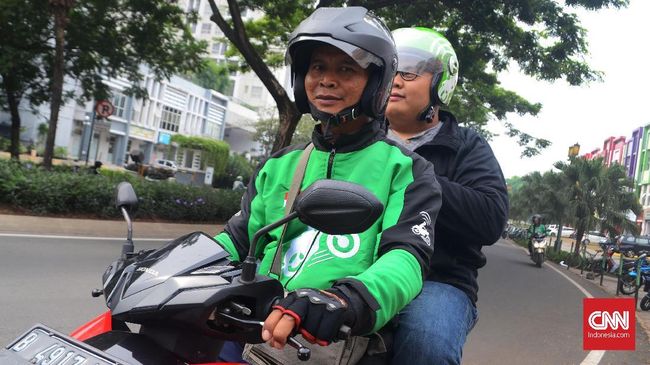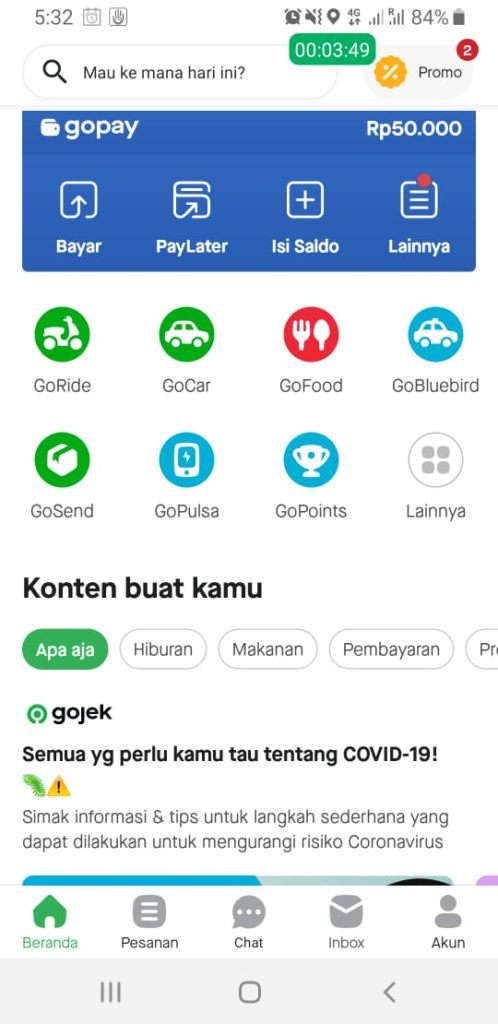Gojek – A Motortaxi for Every Need

A deep-dive on Gojek, Indonesia's first unicorn, an app matching motorbikes with commuters, delivery services and service providers.

The Indonesian unicorn Gojek has successfully managed to become much more than the “Uber of Indonesia” by making sacrifices early towards its goal of becoming a “Super App”, a platform for a multitude of services modeled after the Chinese WeChat platform.
While widely successful and becoming a crucial element of daily life, culture and national pride in its home market, Gojek failed in expanding to other markets where it didn’t have the opportunity and timing to succeed in multiple services at once.
 History
History
Gojek was started in 2010 by HBS alumnus Nadiem Makarim as a platform for two-wheeled motorbike taxis (Indonesian “Ojek”), which were common for many years. While the service operated as a phone line for the first years, it launched its app in 2015.
Following the app launch, the service exploded in popularity within the country. Gojek became the first Indonesian Unicorn, and Makarim a national celebrity. More than one million Indonesian riders service the various services, which include GoFood, the largest food delivery outside China.
As Grab followed Gojek’s SuperApp model, the two companies started an intense competition, which saw Grab acquisition of the regional Uber operations, massive price wars, and Gojek’s geographical expansion into Grab territory in Singapore, Philippines, Thailand and Vietnam.
The companies also launched competing online wallets, and Gojek’s GoPay and Grab-invested Ovo soon offered highly visible discounts and cashbacks for offline purchases all across the country. As payments are seen as the must-win market, Gojek tried to reinvent itself as a Fintech company.
In 2019, Founder Makarim left the company to join the cabinet of recently reelected President Jokowi.
Other than what were oftentimes named as global and regional peers – Uber and Grab – Gojek was designed as a multi-service platform from day one. When opening the app, it would not open to a map-view to select pick-up location, but rather to a screen prompting the user to select one of up to 18 services, which include:
- Go-Ride – the classic service: transportation on the back of a motorbike from location A to B
- Go-Car – transportation in a private car, identical to Uber’s service.
- Go-Bluebird – transportation in a taxi of Indonesia’s largest taxi company Bluebird
- Go-Send – sending an item from A to B (this is also offered as logistics service to e-Commerce companies via API)
- Go-Food – food delivery fulfilled by a Gojek driver. Restaurants did not have to sign up in order to be listed in the app.
- Go-Pulsa and GoBills to pay bills including electricity, mobile phone credits and other bills
- Other services brought service providers via Motorbikes to the customers, including Go-Massage for on-demand massages, and Go-Glam for on-demand beauty specialists.
- Other products and services available include event tickets, home cleanings, moving, grocery shopping, car repairs
Key Innovations
Gojek succeeded were Uber largely failed by introducing some innovations and collaborations very particular to the local market:
Top-up via Driver
In a country where less than half of consumers are banked, and less than 5% own credit/debit cards, adding money to Go-Pay’s wallet was considered a core challenge to kickstart an online payment ecosystem and overcome the limitations of cash payments.
Starting in 2017, Gojek allowed customers to top-up their wallet by giving cash to the drivers, or alternatively asking drivers to add the change for an order to their wallet. In addition, this ensured that drivers carry the necessary cash to pay for orders that frequently were of higher value than their weekly pay.
BCA partnership
Gojek partnered with Indonesia’s largest banks to bring Drivers – as members of lower economic class mostly unbanked – to open bank accounts with BCA. Drivers were able to sign up for both a driver account and a bank account within one session, creating a win-win-win situation.
‘An Ojek for every need’
In Jakarta’s famous “macet”, the traffic congestion that can make even the shortest taxi ride into a 2 hour test of patience, the motorbike is by far the most efficient means of transportation.
But more than that, a key differentiator to Uber’s service in most developed countries is that motorbikes can also be used for delivery for other services. Uber’s cars, which have to meet certain quality and age standards, are not ideal means of transportation for a portion of food. Instead, bikes and motorbikes are faster and cheaper. Different in Indonesia: The motorbike is both the best way to transport goods, service workers AND customers.
These two facts show why Gojek was able to build a ‘Super App’ where Uber never tried.
Gojek as the WeChat of Indonesia?
Today, Gojek is in a similar situation as WeChat in China. While WeChat used Instant Messaging to first gain market penetration, Gojek used transportation. But both are similarly trying to maximize penetration and customer value through a mobile wallet, and the integration of more and more services.
A key difference remains in the approach to other services. While WeChat has opened up APIs for external developers to build companies in the ecosystem, Gojek’s platform remains to the large part closed to Gojek’s own services – oftentimes as result of acquisitions.
Both are now in a situation that is almost impossible to disrupt, as they are deeply involved in both online and offline services. Gojek even started offering News Services and Netflix-like content.
Gojek’s international scalability
But the high footprint required to make such a model work makes it difficult to bring the model to other countries. Gojek’s international efforts so far were of limited success, as it offered a very limited range of services – and therefore loses both much of its appeal, and of the strong network effects.





Thanks Bastian for the interesting article. Gojek’s success in Indonesia underlines the importance of having deep knowledge of the local market and tailoring its strategy and tactics to suit the context and customers. We often see copycats, transplanting the same business model from one geographical market to another, in an effort to replicate the success of the original company. While this may work some times, especially if two markets are similar, it’s often not the best move to ensure the sustainability of the business. In the case of Gojek, it’s fascinating to see how the company established local partnerships early on, helped clear the hurdles of low banking adoption, and leveraged its core competency in motorbikes to expand into adjacent services.
Thanks for the post, Bastian! I agree with you PZ, and it is also interesting to note that all the localization efforts that they made in Indonesia were abandoned when they started to quickly expand to other markets. If localization is the key element to succeed in these clusterized network structures, then it would be recommended for companies to expand internationally at a slower pace, establishing partnerships with or investing moderately in local players rather than competing against them.
Thanks for the great blogpost Bastian, I had never heard about Gojek. What they’ve built in Indonesia seems to have all the qualities of a strong, defensible platform. The way I see it, the largest risk with this type of platform is their vulnerability to multi-homing, which doesn’t seem to be an issue here given their super-app status which creates value on both sides of the platform. I agree with you on their limited potential for international scalability, and I believe that building a regional or global cluster on top of their local cluster would not bring many benefits to the platform as a whole, rather than individual benefits for each local cluster.
Great post – thanks Bastian. I think this idea of a “SuperApp” is very interesting and has important strategic implications. While the approach has certainly led to great success for Gojek up to this point, I see a tension between focusing on doing a small number of things incredibly well versus doing a large number of things decently well. The latter strategy is attractive because it increases a company’s footprint but also unattractive in that it creates risks of competition if an up-start figures out how to do one of those things much better than you, rapidly steals market share in that category, and then starts to encroach on other categories. I think the optimal strategy for how much to focus vs. expand would vary greatly depending on market, geography, etc.
Matt – I completely agree. Gojek has clearly come a long way since 2010, but I think now more than ever, they should be concentrating on their core competencies. Offering transportation by scooter/motorbikes in a small country with over 250 million people has been their winning strategy, and when considering veering into Fintech or international expansion, I hope they don’t loose track of what made them such a big success.
Thank you for a great post, Bastian! I think that it’s very impressive that Gojek was set up as a multi-service platform from day one. It’s clear from your post that it worked out for them, but I wonder if that strategy is too risky in general. I could see a scenario where a customer tries for the first time one of the services in Gojek’s platform – if that service in particular is not of the highest quality or is malfunctioning (maybe because it’s the service where they have invested the less), there’s a chance that the customer might think negatively of Gojek as a whole and not trust the rest of its services.
Separately, the fact that Gojek drivers carry cash in order to make their services available to customers with limited banking sounds great. However, it makes me think of Uber’s cash strategy in Latin America and the terrible consequences that it’s having. In Brazil in particular, the robbery and murder of Uber drivers is causing Uber to re-think its cash strategy. I’m sure that Gojek has evaluated the situation in Indonesia to make sure that its drivers are safe, but I wonder if they’re aware of what is happening to Uber in some Latam markets.
Thanks for the very interesting article. Did “Ojek” operate within the boundary of regulation before Gojek launched? If so (or not), how did the relationship with the traditional Ojek industry and government change after Gojek? I am curious whether Gojek or government regulations provide social/job security for the drivers since it is contentious issue of gig economy.
Really loved reading this blog!! I went on a few Gojek motorcycles in Jakarta this past January and absolutely loved the experience. I had no idea it was more than a ride sharing app. I wonder if Gojek can expand internationally by only providing select services that would work well. For example, there are probably quite a number of African countries that could use services such as GoClean, GoSend etc. So given Gojek’s vast range of services, could they explore offering tailored subsets of services that fit particular countries as a way to expand internationally?
I think it requires a culture of going around on motorbikes. In indonesia, every other person already had one before Gojek, and taking a motortaxi, as mentioned, was normal. Will be hard to get enough penetration if that’s not a given.
Great article. What are your thoughts on dealing with competitors like Grab that is also a superapp with similar offerings and membership structures (gold/platinum and ) and have government support in other asian countries in the area including indonesia. As you mentioned, there is a potential market cap in indonesia and limited penetration outside the country due to the inherent localization of services and being one of first to market in indonesia. They could expand to new markets but has the time to strike passed?
Thank you for this very interesting post! Gojek seems to be in a very good and defensible position in Indonesia. My only concern with this model is that although transportation seems to be a good base for the super app, messaging and financial apps (such as WeChat) are more powerful and could represent a real threat for the company, in terms of new competitors in the market. I wonder why Gojek hasn’t tried – or why it failed – to further expand on both fronts as to increase its dominance.
I love the concept of a “SuperApp”, as @Matt B pointed out. I find it interesting that your primary comparison was Uber rather than Lyft, especially given Lyft’s response to corona virus: https://techcrunch.com/2020/03/22/lyft-to-offer-medical-supply-and-meal-delivery-during-coronavirus-pandemic/
This sort of response seems to signal that Lyft is preparing to also move to other sorts of transportation, though they don’t quite have the breadth of Gojek with anything like Go-Pulsa or GoBills.